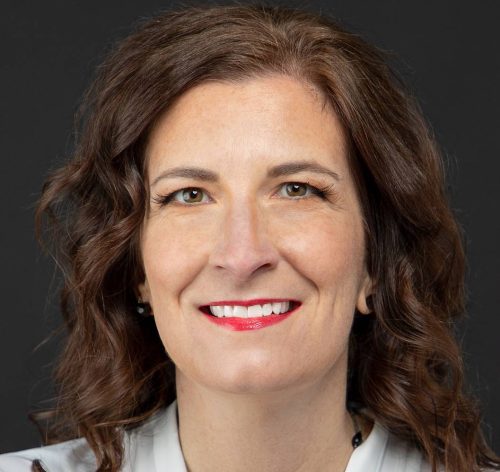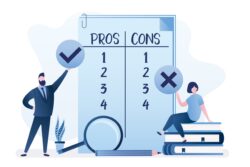Using the words “collaborative” and “divorce” together may seem unnatural – how can the process of splitting up happen by working together? Yet, this relatively new concept can be a way to help some divorcing couples begin new lives while practicing respectful communication and negotiations throughout the divorce process.
The “Collaborative Law” concept was originally introduced in the 1990s by Minnesota family law attorney Stu Webb, who promoted attorneys trained as negotiation specialists to resolve conflicts outside of the courtroom. Collaborative practice now exists across the country with attorneys and other professionals trained to preserve a level of respect among divorcing couples, avoid antagonistic proceedings and, for parents, provide a better likelihood of co-parenting harmoniously long into the future.
Mediator and attorney Kimberly Stamatelos was one of the first Iowa lawyers to adopt a collaborative practice in 2005.
“I’ve practiced law for 40 years,” she said. “I’ve seen the devastation that comes to families in divorce, and I recognized that the traditional system could add hurt, cost and can continue the fight.” She was frustrated going to trial for her clients and says even when she “won,” she didn’t feel like it was a healthy end for many couples.
Who benefits from a collaborative divorce?
Laura Bernard, one of Stamatelos’ clients, recalls that in marriage counseling, when it became evident the marriage was likely going to end, her therapist said, “Marriage is kind of a flawed institution, and divorce is horrible as well. Be creative in what you do to try to eliminate damage.” As the mother of seven children ages 22 to 9 years old, these words echoed in her head as she began researching divorce and learned about the collaborative process. “The more I read about it, it just felt perfect,” she recalls. “My primary goal was how we can do this in a way that keeps our relationship with each other civil so we can co-parent successfully.”
Collaborative practice attorneys are specially trained to work with other collaborative attorneys as a team throughout the divorce process. These teams may also include additional collaborative professionals as needed to help the couple, including mental health experts, child specialists and certified divorce financial analysts.
“We all have the same agenda, we want everyone to be OK,” Stamatelos said. Traditionally, family lawyers provide solutions in parenting, finance, mental health, and other areas where they may not be subject matter experts. With a collaborative team, subject experts are brought to the table as needed to work alongside collaborative attorneys and provide more effective solutions. This allows attorneys to focus on what they do best: draft legal documents and get the sign-off from the judge – without court hearings.
The only complicated area in Bernard’s collaborative divorce involved their finances, so their attorneys suggested bringing in a collaboratively trained financial expert. “Sometimes he was in on the calls, and he did evaluations and assessments. Once we even met with him without the attorneys there,” she said. In the end, Bernard believes this process saved them a lot of money and heartache.
Collaborative divorce attorneys are still strong advocates
Stamatelos said she still strongly advocates for her clients, but she focuses on being firm yet kind. “I take into consideration that this family must be together forever. Even when the kids are grown up, you’re going to be grandparents together. Collaborative divorces are a healthier way to resolve problems,” she said.
Bernard described herself as motivated by harmony and avoiding conflict, so she relied on Stamatelos to be her voice at times when she knew she needed help. “I would say, ‘this is where I’m going to be weak, so I need you to do this,’ and she was super at that,” Bernard said. “There was one financial piece we were tight on, really the only piece up for debate. She figured out a different strategy, and we got to a place where everybody felt OK.”
Stamatelos and the ex-husband’s collaborative attorney were able to meet and discuss the issue without the couple and figured out how they could work through what the law says about it with each of their clients to get to a realistic resolution.
Collaborative practice is not the same as ‘cooperative’
Stamatelos warns that there’s an emerging trend among attorneys to claim they are providing a “cooperative” service, and she cautioned not to be fooled.
“There’s no such thing as “cooperative divorce.” We’re not just playing nice; there are specific rules to collaborative practice,” she said. Contrary to a collaborative divorce, a so-called “cooperative” practice does not involve any special training and does not require upfront contracts outlining what the process entails.
Stamatelos says the only requirement of a collaborative divorce is that clients sign a disqualification clause agreement that states if negotiations break down, the collaborative attorneys are dismissed and litigation attorneys are hired. This just helps couples understand the basic premise – they will be working together toward a more respectful resolution.
“The thing that’s most misunderstood about collaborative is that you must sit in the same room,” Stamatelos said. In fact, since the Covid pandemic, Stamatelos does most of her work through Zoom meetings. While couples and their collaborative attorneys can and do work together in the same room with clients, it can also be done without meeting. Bernard says many times Stamatelos and her ex-husband’s attorney would meet without them, both attorneys fully understanding the needs and desires of their clients.
“There are ground rules, and we do have four-way meetings involving two lawyers and two clients,” Stamatelos said. “But if you don’t want to sit in the same room, you can still be collaborative if you’re willing to sign the disqualification agreement. Each case is customized for what works best for clients while still honoring the collaborative process.”
Who collaborative divorce isn’t right for
There are people the collaborative process wouldn’t work for, and those are typically individuals who want to fight, Stamatelos said. You don’t need to have a group hug, but you do have to be open to working through things in a problem-solving component with the goal to move the family forward. People who are seeking revenge or who are hellbent on getting full custody of their children no matter what probably wouldn’t appreciate the collaborative approach. However, Stamatelos says she’s even helped domestic abuse victims through the process. “They don’t want to go to trial to sit in a courtroom across from their abuser.”
How to find an attorney trained in the collaborative process
Bernard found Stamatelos through an online search and was ultimately also referred to her through a friend, which Stamatelos says are both viable ways to find a collaborative attorney. However, she also encourages people to meet with attorneys who claim to have a collaborative practice and to verify that they have had training and experience by asking them details about it.
“A lot of collaborative attorneys will provide an initial free or low-cost consultation. See how that feels. Then go to a litigator and see how that feels and resonates,” she said. Your spouse must also agree to a collaborative process, and she recommends they also meet with collaborative and litigation attorneys. She also says most states can provide a list of practicing collaborative attorneys.
Once Bernard learned about and became interested in a collaborative divorce, she says it wasn’t hard to convince her ex-husband of the benefits. Stamatelos was able to provide a list of other collaborative attorneys, and her ex-husband chose someone Stamatelos had worked with before.
“It was nice to end this phase of our life in such a neutral way,” Bernard said. “It was a very emotional thing, and to have it end in a way that was very respectful and an acknowledgment of where we’ve come to contributed to our continued respect.”






